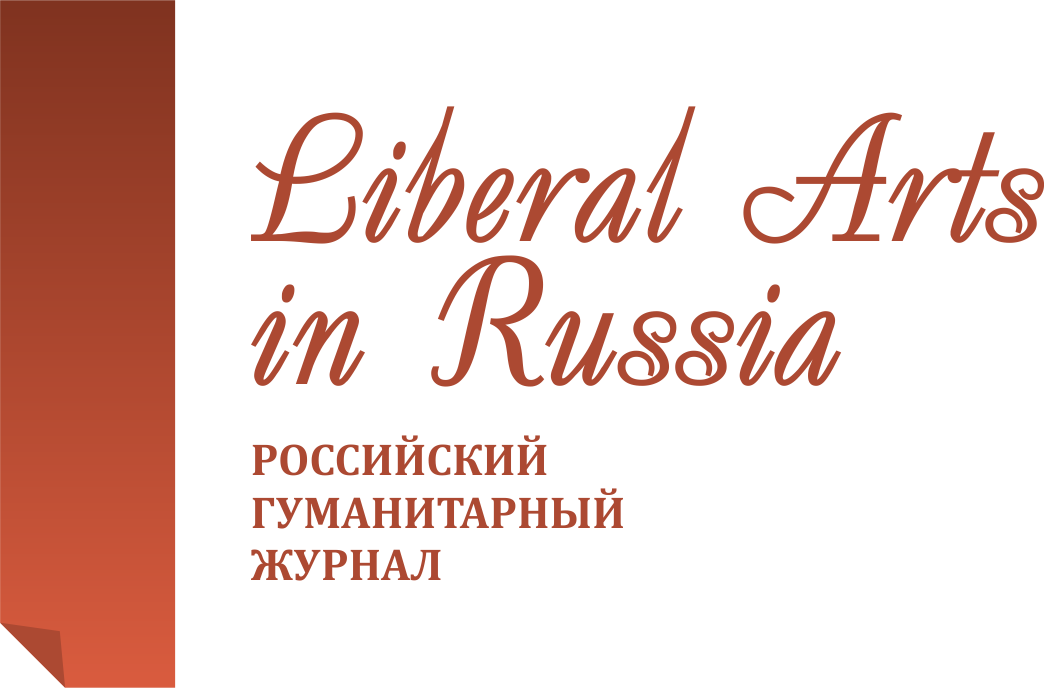Notes From the Dead House: An Exercise in Spatial Reading, or Three Crowd Scenes
Liberal Arts in Russia. 2014. Vol. 3. No. 5. Pp. 354-368.
Get the full text (English) Email: flath@duke.eduAbstract
The article offers an analysis of the workings of Dostoevsky’s paradoxical poetics of space in three scenes of Notes from the Dead House. In spite of the fact that freedom in its direct meaning is accessible only outside the walls of the prison, and that in our social world it is accessible only to a few, inside the prison freedom can be acquired by everyone, and can be found within every individual. The bathhouse scene, as is often noted by critics, offers a picture of hell. However, the bathhouse, like the church where the prisoners celebrate Easter, is located in the town, not inside the prison. Parallels are analyzed between these two scenes and the theater scene, which serves as the culmination of Part I. The theatrical performance takes place in the barracks where the prisoners live. The curtain is described in terms that suggest an iconostasis; details of the performance suggest a church service. After the theater, the inhabitants of the fortress experience a deep feeling of calm and blessedness, which they do not experience in any other space: “Everyone was somehow unusually satisfied, even as though happy, and they fell asleep not as at all other times, but almost with a calm spirit”. In this way, Notes from the Dead House gives a new vision of freedom at the very center of the prison. The article cites work by Bakhtin, Emerson, Jackson and others.
Keywords
- • Feodor Dostoevsky
- • Notes from the Dead House
- • chronotope
- • theatrical performance
- • iconostasis
- • church service
- • prison freedom
References
- Bakhtin M. Rabelais and His World, Tr. Helene Iswolsky. Cambridge, MA.: MIT Press, 1968.
- Bakhtin M. Forms of Time and of the Chronotope in the Novel: Notes Toward a Historical Poetics. The Dialogic Imagination: Four Essays. Ed. Michael Holquist, tr. Caryl Emerson and Michael Holquist. Austin: The University of Texas Press, 1981. Pp. 84–258.
- Bakhtin M. Problems of Dostoevsky’s Poetics, edited and translated by Caryl Emerson. Minneapolis: University of Minnesota Press, 1984.
- Достоевский Ф. М. Полное собрание сочинений: в 30 т. Л.: Наука, 1972–1990.
- Emerson Caryl and Gary Saul Morson: Mikhail Bakhtin. Creation of a Prosaics. Stanford, CA: Stanford UP, 1990.
- Finke M. The Hero’s Descent to the Underworld in Chekhov // Russian Review. 1994. Vol. 3. No. 1. Pp. 67–80. https://doi.org/10.2307/131295
- Flath C. A. Fear of Faith: The Hidden Religious Message of Notes from Underground // Slavic and East European Journal. 1993. Vol. 4. Pp. 510–529. https://doi.org/10.2307/308459
- Frank J. Dostoevsky: The Years of Ordeal 1850–1859. Princeton: Princeton UP, 1983.
- Jackson R. L. The Art of Dostoevsky: Deliriums and Nocturnes. Princeton: Princeton University Press, 1981.
- Kermode F. The Genesis of Secrecy: On the Interpretation of Narrative. Cambridge, MA: Harvard University Press, 1979.
- Lahusen T. De la Tautologie: Reflexions sur les Notes d’un Souterrain de F. M. Dostoevskij (Contribution a une Linguistique du Texte litteraire) // Russian Literature. 1989. Vol. 25. No. 2. Pp. 141–198. https://doi.org/10.1016/0304-3479(89)90011-2
- Morson G. S. The Boundaries of Genre: Dostoevsky’s Diary of a Writer and the Traditions of Literary Utopia. Evanston: Northwestern University Press, 1981.
- Nabokov V. The Annotated Lolita. New York: Vintage, 1955.
- Tolstoi L. Chto takoe iskusstvo // Tolstoi L. Polnoe sobranie sochinenii. Moscow-Leningrad: Khudozhestvennaia literatura.
- Rosenshield G. Islam and the Russian Orthodox Ideal // Notes from the “House of the Dead”, XII Symposium of the International Dostoevsky Society. Geneva, 1–5 September, 2004.
